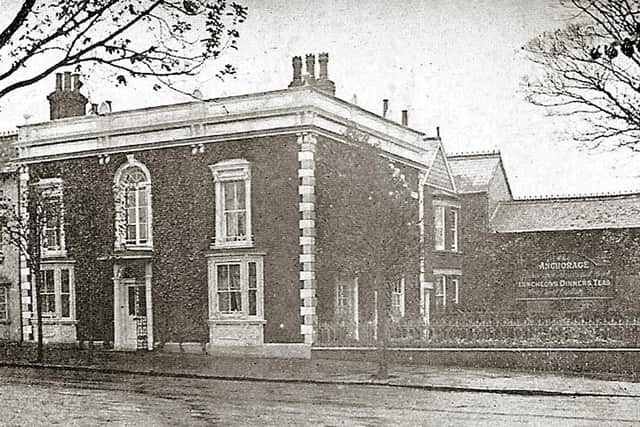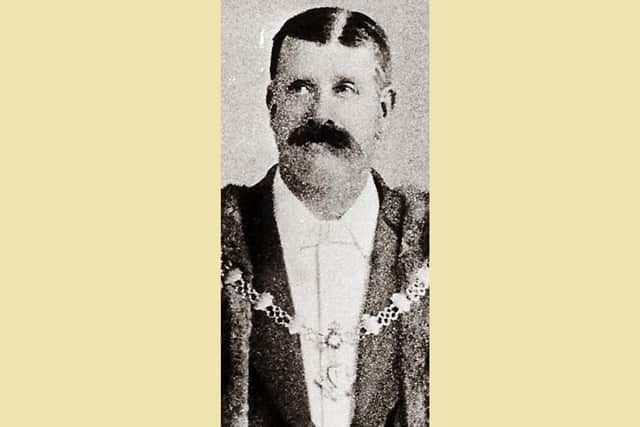YESTERYEAR: When a King's coronation led to rioting in Dunstable
and live on Freeview channel 276
Two days before the ceremony, King Edward became seriously ill with appendicitis and his coronation had to be cancelled.
When the bombshell news arrived in Dunstable, townsfolk were busily decorating the high street, building a giant bonfire on the Downs and preparing food for an old folk’s party.
Advertisement
Hide AdAdvertisement
Hide AdAn emergency meeting of the committee organising Dunstable’s festivities was called by the Mayor, Alderman Arthur Langridge, and a hasty decision was made to abandon all the events.


It soon became clear that many locals disagreed and within a day, events got badly out of hand. An angry town meeting developed into a riot and a mob stoned the homes of the Mayor and the town’s Rector.
The trouble was particularly serious at the Rectory, where 50 plate-glass windows were smashed.
In 1902 the Rector, Canon Heyrick Macaulay, lived at Grove House in High Street North, now the offices of Dunstable Town Council.
Advertisement
Hide AdAdvertisement
Hide AdHe had made a persuasive speech urging that it would be wrong to hold any kind of festivity when the King’s life was in danger, and this had particularly influenced the organising committee’s decision.


The morning after the committee meeting crowds gathered in Dunstable high street to listen to speeches made from the town hall balcony.
One source of discontent was that the food prepared for the Coronation parties might go to waste. It was decided to present a petition to the Mayor asking him to recall the committee and reconsider. But he refused to receive the petition, later claiming that he had been insulted by its organiser, Mr E P Graham.
This led to a further town meeting that afternoon, when between 2,000 and 3,000 people gathered outside the town hall, thronging the high street from the crossroads as far as the Sugar Loaf Hotel. They cheered an angry speech from Mr Graham and the meeting ended in uproar.
Advertisement
Hide AdAdvertisement
Hide AdA mob, shouting and blowing whistles, marched to the Mayor’s house – Crawley Villa in High Street South. They threw stones at his windows and a policeman was injured.
The crowd then gathered around the lamp at the centre of the town centre crossroads where they heard some inflammatory speeches about the Rector before marching to his home and smashing windows there. Other rioters went down West Street towards the Downs where they set light to the bonfire which had been built ready for Coronation Day.
A portable hut on wheels which had been provided for watchmen guarding the bonfire was also set alight and pushed down the steep slope on the western side of the hill (Pascombe Pit). The blaze could be seen for miles around and attracted further crowds.
Rioters also seized a 35-gallon barrel of beer which had been provided for the coronation festivities by Benskins brewery. This had also been the subject of some local controversy – the Rector had urged that the gift be refused as being unnecessary for a tea party but he had been over-ruled.
Advertisement
Hide AdAdvertisement
Hide AdThe beer had been stored at Mr Gutteridge’s house and, in fear of assault, he allowed the crowd to roll the barrel down West Street to the downs where it was consumed.
When the blaze from the bonfire died down the crowd returned to Dunstable where the disturbances continued.
Next morning the Rector was booed as he walked to the Priory Church to conduct a service to pray for the King’s recovery. The local justices met to appoint special police constables to aid the Dunstable Borough police force and Luton police also provided reinforcements.
But there was no more trouble in Dunstable and that weekend a Coronation tea was held at Dunstable Park for 1,000 children with local grocer Mr Andrews provided the catering on “a liberal scale”. And the King recovered after a pioneering operation. He was crowned in August that year.
Advertisement
Hide AdAdvertisement
Hide AdThe Dunstable riots led to one man, Thomas Saddler, being gaoled for one month with hard labour for assaulting Police-sergeant William Curell.
Three men, Harry Underwood, Henry Howe and George Holt, were sent for trial to Bedford Assizes for riotous assembly. There, the Lord Chief Justice dismissed the charges, saying that “riotous speeches” had been made by other, responsible, citizens.
Crawley Villa in High Street South was a very substantial building set in three acres of ground which included an orchard, a tennis lawn, an orchid house, a 40-seater pavilion and a coach house.
It is difficult today to be sure of its location in the absence of a numbered address but it seems likely that it became the Anchorage hotel (pictured) which in turn was rebuilt as the present United Services Club.
Advertisement
Hide AdAdvertisement
Hide AdAlderman Langridge had moved in around 1906 to live nearby in another of his properties, The Poplars, now the home of the Reg Transfers business.
He died suddenly in 1908 and his widow moved to yet another family property, The Cedars, whose name can still be seen high on the building which is now the Halford’s auto centre.
> Yesteryear is compiled by John Buckledee, chairman of Dunstable and District Local History Society.